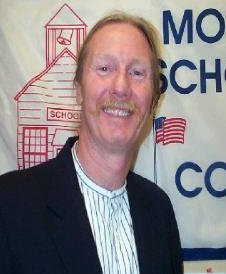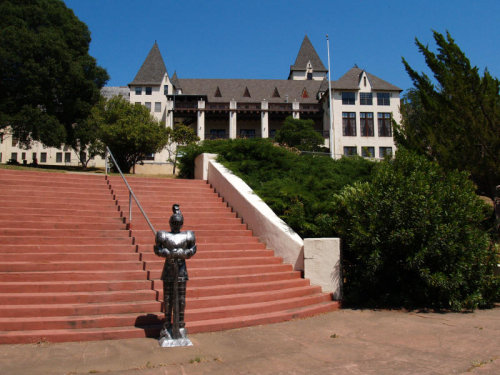- Dr. William MacDougall
- Posted On
MacDougall: The best investment

As most of you know, the California State Legislature still has not agreed upon a budget. This places all state-funded agencies, including schools, in a very tough position.
As they debate, life goes on and state-funded agencies spend monies not knowing exactly how much will be received when the debate ends. In their efforts to force an agreement, the legislators and the governor have made rumors and threats regarding cuts and financial withholdings.
I was taught to always “hope for the best, but prepare for the worst.” This philosophy has served me well and that is exactly what we have been doing.
Prior to the beginning of the year, the Konocti Unified School District developed a budget based upon the best projections available from multiple sources. The KUSD administration knew that things were going to be tight and staffed accordingly.
We have entered 2009 still with no budget adopted by the state. The governor has stated that there will be drastic cuts, but no amounts have been determined.
Now rumors are surfacing of IOUs coming from the state. These are only rumors, but IF it were to happen, it would cause a huge financial turmoil that would affect all aspects of the California economy. However, with the “prepare for the worst” philosophy, we have secured funds to get our contracted employees through this possibility.
The key phrase here is “contracted employees.” We know how much we are spending on our contracts with our classified and certificated staff. Where we come into problems is when we add staff time through time sheets.
Most of these time sheet hours are to be paid out of grants we have been awarded or categorical funds we have been promised by the state. The state is saying that it may not honor or may greatly reduce what we have been awarded or promised. Thus, we should not spend monies that we cannot count on receiving. That is why we have temporarily suspended time sheet hours and continued the spending freeze.
Once the budget is adopted, hopefully very soon, we expect to lift the suspension of time sheets and continue to fund the staff needed to operate programs such as our after school Academic Opportunity (AO) and music programs.
Over 40 years ago, my father told me that a person’s true character is best shown during the “tough times.” I have talked with several people who are being financially affected by the temporary suspension of time sheet hours. Almost every person I have spoken with has understood the necessity of this decision and then stated that “we’ll make sure that the kids get what they need anyway.” Members of our community, specifically in this case the KUSD staff, are again going the extra mile, without financial compensation, to provide services and enrichment to our community. This is the TRUE character of our community.
In these times we have very few things we can count on, but we can count on our community. When I first came to Lake County, the Lower Lake High School football field, later named Sadler Field, had just been completed. This field was completed through the funds and volunteer efforts of many outstanding citizens. This month, we opened our new gymnasium, a state-of-the-art facility that has the largest indoor seating capacity in Lake County. The gym was paid for out of bond funds purchased by our community. Amazing things happen when our community decides to invest in our children.
Another great example of how a rural community, with limited financial resources, can create a highly successful, heavily attended family activity is the Konocti Basketball League (KBL). KBL provides evening activities for youth at each elementary school and then coordinates games from 8 a.m. To 3 p.m. on Saturday.
Opening day games took place on Saturday, Jan. 10. There were hundreds of people at Lower Lake High School, enjoying a fun-filled, family activity. Parents are asked to pay $30 for each player for the entire season, but several children are sponsored by community members because some parents are unable to pay the fee. KBL is an all-volunteer organization. All coaches, referees, and organizational positions volunteer their time so that the youth of our community have supervised, safe activities after school and on Saturday.
KBL requires and enforces a policy of sportsmanship and code of ethics for its athletes and parents. This policy promotes a sense of honor, appreciation, respect and community.
The healthiness of this family activity is noteworthy. Children and their parents spend the day participating and watching basketball, and sharing “quality time.” This activity would not be possible without a partnership between the schools and a large group of community volunteers. Many of these volunteers do not have children participating; they simply want to “look after” the kids in our community.
The Calling All Communities Challenge is another example of our community’s unity and health. This U.S. Cellular-sponsored competition stated that $100,000 would be given to the 10 schools around the country that received the most community support. Community support was determined by the number of prepaid postcards that were filled out naming an individual school.
Within weeks, Lower Lake High School was listed as having the fifth-highest number of votes in the entire nation. The local newspapers and communication networks kicked into high gear as the new year arrived. People throughout Lake County realized that only one California school was ranked anywhere near the top 10.
Votes for Lower Lake High School started pouring in from all over Lake County. We will not know the final results until Feb. 15, but the last unofficial estimate from U.S. Cellular had Lower Lake High at No. 4. Thanks to all of you who voted! This really shows how our community and county are special, strong and supportive.
Representatives from the county of Lake, the city of Clearlake, KUSD and our community have been meeting weekly since November to investigate ways to increase revenue and make our dollars go further. Members of our community continue to volunteer their time and resources to provide activities, food and shelter to our kids.
One thing is certain; the best investment we can make is in our children. This is the basic, beautiful belief of the Konocti Unified School District and our community. We live and work with some of the most caring, hard-working, community-minded people on Earth. I am humbled and honored to work with you and to be able to serve our community.
Dr. William R. MacDougall, Ed.D., is in his first year as Konocti Unified School District's superintendent. He writes periodic updates with community members to let them know the state of the district.
{mos_sb_discuss:4}










